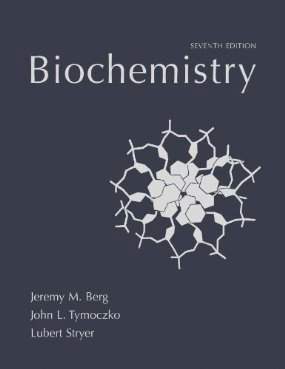Connecting...

This is a quick preview of the lesson. For full access, please Log In or Sign up.
For more information, please see full course syllabus of Biochemistry
For more information, please see full course syllabus of Biochemistry
Biochemistry Acids & Bases
Lecture Description
Acids are generally defined as substances that give up a hydrogen ion (H⁺) in solution. Bases can accept H⁺ or provide an OH⁻ that will combine with it to make H₂O. Amphoteric substances like water can do both (a small amount of water will dissociate into H⁺ and OH⁻ under normal circumstances). The equilibrium constant (Kₑq) is equal to the H⁺ concentration times the OH⁻ concentration. For water, Kw equals 1.0 x 10⁻¹⁴at 25 degrees C. pH is the –log of the concentration of H⁺ and goes from 1 to 14 (acidic to basic). Strong acids and bases dissociate completely (e.g. HCl → H⁺ + Cl⁻) while weak acids and bases are in equilibrium (Kₐ or Kb). When acids dissociate, the remaining ion is called the “conjugate base.”
Bookmark & Share
Embed
Share this knowledge with your friends!
Copy & Paste this embed code into your website’s HTML
Please ensure that your website editor is in text mode when you paste the code.(In Wordpress, the mode button is on the top right corner.)
×
Since this lesson is not free, only the preview will appear on your website.
- - Allow users to view the embedded video in full-size.
Next Lecture
Previous Lecture










































 Answer Engine
Answer Engine




1 answer
Wed Feb 8, 2017 12:00 AM
Post by Kapil Patel on January 31, 2017
hi professor Hovasapian i have question the ph practice problems can you help me
answer this questions? thank you
question number 1. If I have a solution with a pH of 4, what is the hydrogen ion concentration ([H+]), hydroxide concentration ([OH-]) and pOH?
question number 2. If I have a solution with a pH of 8, what is the hydrogen ion concentration ([H+]), hydroxide concentration ([OH-]) and pOH?
question number 3. If I have a solution with a pH of 11, what is the hydrogen ion concentration ([H+]), hydroxide concentration ([OH-]) and pOH?
question 4. If I have a solution with a pH of 2, what is the hydrogen ion concentration ([H+]), hydroxide concentration ([OH-]) and pOH?
question 5. If I have a solution with a [H+] of 1x10-3, what is the pH, hydroxide concentration ([OH-]) and pOH?
question 6.If I have a solution with a [H+] of 1x10-5, what is the pH, hydroxide concentration ([OH-]) and pOH?
question 7. If I have a solution with a [OH-] of 1x10-3, what is the pH, hydrogen ion concentration ([H+]) and pOH?
question 8.How much stronger is an acid with e pH of 3 then one with a pH of 6?
and question 9.How much strong of a base is a solution with a pH of 12 then one with a pH of 7
2 answers
Last reply by: rew node
Sat Nov 22, 2014 10:05 AM
Post by rew node on November 21, 2014
can you explain equation of strong base
why is not left
cus i don't get it this equation
1 answer
Fri Jun 20, 2014 4:41 PM
Post by Catherine Hand on June 20, 2014
There is quite a few subjects I am not following. Especially the Henderson-Hasselbach equation, parts is because i do not know how to do the negative log calculations. Is there another course I should of done first?
2 answers
Last reply by: Catherine Hand
Fri Jun 20, 2014 9:30 AM
Post by Donna Karein on August 2, 2013
I am trying to find how you got 3.98 sorrry
2 answers
Last reply by: tiffany yang
Sun Sep 29, 2013 4:52 PM
Post by Nawaphan Jedjomnongkit on May 6, 2013
Hi Professor, you mention that the acid and base reaction the only thing that move is H+ so what happen if in acid base reaction that does not have H+ like in Lewis acid or base? Will we still use Ka Kb in this situation? and how about the pH or pOH?
0 answers
Post by Professor Hovasapian on March 29, 2013
Hi Marsha,
I hope you're doing well.
Ka values have been calculated experimentally and placed in tables -- usually in the appendices at the back of the book -- or shorter versions within the chapter itself. If you don't find it in the back of your Biochem text, you'll most certainly find it in the back of your General Chem Text -- the Title of the table will be something like "Stepwise Dissociation Constants for Several Common Polyprotic Acids". The second dissociation Constant for Phosphoric Acid (Ka2) is listed as 1.38 x 10^-7.
I hope that clears it up. if not, let me know, and I'll remedy the situation.
Best wishes, always, and take good care.
Raffi
2 answers
Fri Mar 29, 2013 5:33 PM
Post by marsha prytz on March 29, 2013
Prof Hovasapian, I am confused as to how you got the Ka2 of 1.38 x 10-7 result. Can you explain to me or show me how that result came about? Thanks Marsha